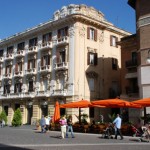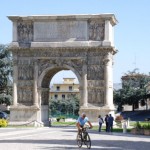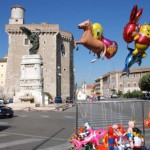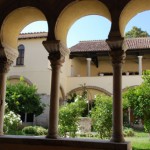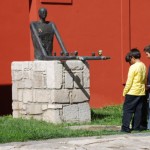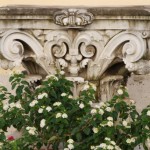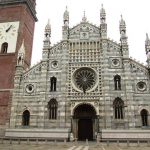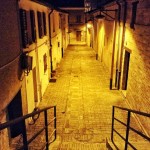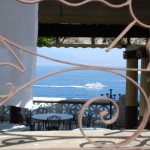And her divine communication with a dove
Benevento, queen of Sannio
Art, history and ancient legends
by Nicoletta Speltra.
My sister and I were born in this country, in two small villages on the hills. Also our parents and our grandparents were born here. Coming back here in the Sannio is always a pleasure, especially with much free time, trekking shoes and a photocamera. Benevento is the main city of this area. A city of ancient origins in time.
Nothing in Italy is the oldest than Benevento. According to local legend, it was founded by Diomedes or Ausone, a son of Ulysses and Circe
noted in 1958 the London-based writer Edward Hutton, in love with the Mediterranean.
Benevento was first Oscan, then Samnite, Roman, Gothic, Lombard, Norman and for much time, from 1077 until the unification of Italy, territory of the Popes.
Walking on the streets of its small historic center is like traveling through the seasons of history. It is located on a hill between two rivers, Sabato and Calore. The main artery of the city, Corso Garibaldi, descends slowly towards their waters. In the background, behind the hills, there is the long profile of a mountain range, “the sleeping beauty of Sannio.”
Here the atmosphere is sober and austere.
- Benevento, Corso Garibaldi
- Benevento, Traiano Arch
- Benevento, Rocca dei Rettori
The symbol of the city is the Traiano Arch, dated 114 AD, pulled up to celebrate the creation of a variant of the Appia; in the nearby there are the great remains of the amphitheater, built probably by Commodus. We can continue with the Roman memories. Important evidences of the Middle Ages are the Rocca dei Rettori, built on the model of the Avignon’s fortress, and the Dom, built in 780. Also the monumental complex of Santa Sofia, dedicated to the Sapienza (that is knolwedge), a great mirror of the universality of the Lombard culture. Church and monastery were founded in 762 by Duke Arechis and they had been completed in the 12th century with the addition of a magnificent arabic cloister with columns carved in limestone, in the alabaster and in the granite with anthropo-zoomorphic decorations. These spaces became just two years ago a World Heritage Site. There since 1929 housed the Sannio Museum, whith Egyptians, Greeks and Romans artifacts, a numismatic section and an art gallery with works by modern and contemporary artists.
- Benevento, Colonnade of Santa Sofia
- Benevento, Hortus Conclusus
- An historical find of the Museo del Sannio
Speaking of contemporaries, one of them, Mimmo Paladino, realized 20 years ago in Vico Noce a permanent exhibition space: the Hortus Conclusus, a secret and protected place, similar to the gardens described in the Gospelsand, all dedicated to meditation. Inside there are sculptures, all around there are the green and the colors of lilies, palms and roses, symbols of divine blood, purity and glory.
What about myths and legends? We have to mention the witches of Benevento, the last incarnations of rural paganism. Someone swears that they still dance around the magical walnut, but only during the nights of full moon.
Nicoletta Speltra
(Photos by Anna Maria Speltra)

